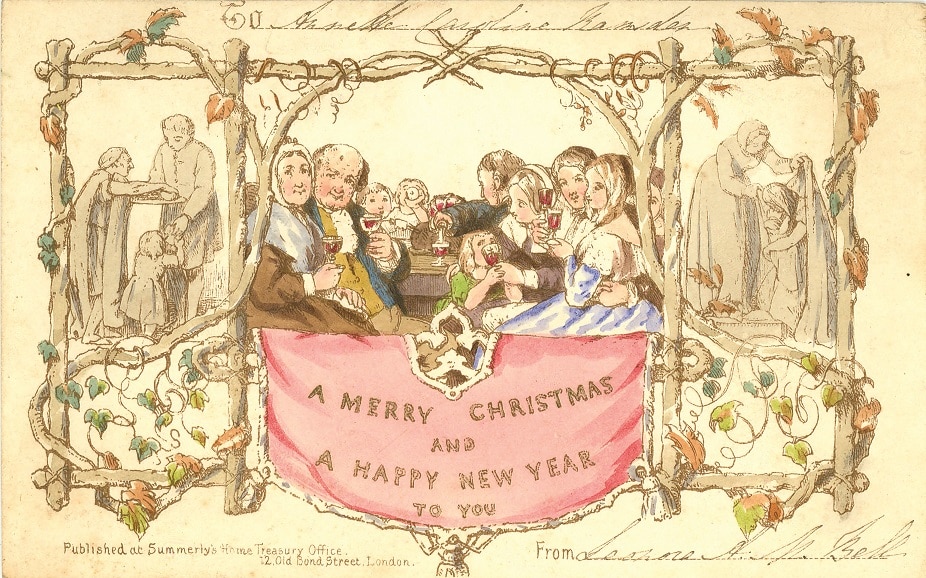As we all know, Christmas cards are a time-honoured tradition of the festive season. It was not until 1843, however, that the face of seasonal greetings would be irrevocably changed when a member of the Cranbrook artists’ colony was commissioned with the task of designing the first ever Christmas card.
John Callcott Horsley was born in London in 1817. As the son of William Horsley, a renowned composer and founder of the Royal Philharmonic Society, he was from a family of well-known artists, musicians and innovators (his brother-in-law was none other than the legendary civil engineer, Isambard Kingdom Brunel).
With such an inspired heritage, young Horsley was destined for tremendous artistic success. He first pursued his creative studies at the Royal Academy in London in 1836, where he met fellow artist and lifelong friend Thomas Webster, who would later establish the Cranbrook artists’ colony.
In 1843, Horsley permanently put his stamp on the world of fine art. As a favour to civil servant and engineer Henry Cole, Horsley designed and introduced the world’s first commercial Christmas card. The design, which depicted a family raising their glasses in celebration, sparked considerable controversy in its depiction of a young baby drinking wine. Such public exposure was unusual for Horsley, who had formerly adopted the nickname “Clothes-Horsley” for his reluctance to portray even a trace of nudity in his work.
A thousand copies of the card were subsequently produced in the same year and sold for one shilling apiece (£2.21 in today’s money). In 1871, however, an inevitable backlash from seasoned Scrooges became widely publicised through a newspaper article, condemning Christmas cards for delaying “legitimate correspondence”. Nonetheless, the craze endured and was big business by 1880, employing artists, painters, writers and engravers in the mass production of these immensely popular festive communications.
Horsley married his first wife, Elvira Walter, in 1846. Following her death from scarlet fever in 1852, he was remarried to Rosamund Haden in 1854. They had seven children together, three of whom were born in Cranbrook, where the family bought a house in 1861. It was Horsley’s old friend Webster who drew him to the sleepy Kentish village, where he was inaugurated into the Cranbrook artists’ colony.
The two friends, along with four additional leading artists of the day, formed a close association of colleagues and companions who thrived in Cranbrook in the latter half of the 19th century.
Depicting still-life scenes of local residents, their work was the first real indication of what everyday life in Victorian-era Cranbrook was like. The six painters, who occupied The Old Studio in the High Street, would often use their families and friends as models in order to create a truly authentic representation of the local community.
Horsley died in October 1903 at High Row, Kensington, but his legacy lives on every December to this day, immortalised on Christmas cards the world over. Our humble town of Cranbrook is part of that legacy, having played host to this unassuming pioneer and put him firmly on the pages of Noël history.








